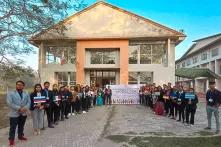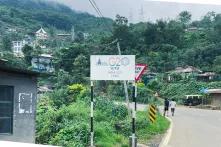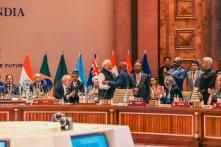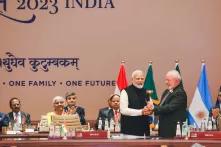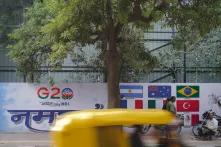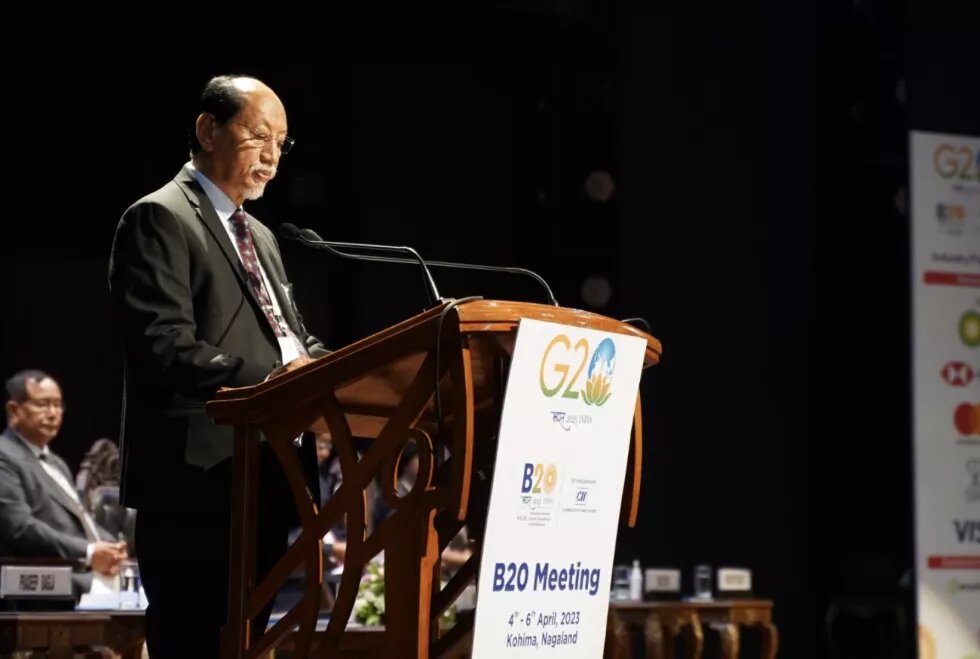
Can the ongoing ‘Act East Policy’ to bring the Northeast closer to the economic powerhouses of the Asia Pacific be further strengthened by India’s G20 leadership?

“We have never heard of G20.”
“We don’t keep newspapers at home, father lets us share his phone at times along with my sister because both of us need it for our school work. But we have a radio at home where our parents play the news. And we often watch TV at our aunt’s house next door. It is in the radio news and TV where we have been hearing about the word G20 a lot these days. Beyond that, I have no idea about G20.”
- Priya Kurmi, student of Class 8 at the Model Tea Garden School, Maijaan, Dibrugarh, when asked about whether she is aware of a G20 delegates’ meet coming up at her town.
(Field interactions with the author, February 2023)
India is holding the G20 Presidency from December 2022 to November 2023 that reached its high point in September with the country hosting the G20 Leadership Summit in the national capital, New Delhi. The Presidency of G20 has come at a very challenging time in world politics as well as at a turning point in India’s own history itself. The G20 members represent around 85 per cent of the global GDP, over 75 per cent of the global trade, and about two-thirds of the world population. Significance of a body like this in a post-pandemic world has emerged stronger.
Officially committed to “do G20 very differently” India emphasised on the very process of holding G20 itself as being uniquely impactful, involving multiple meetings with multiple stakeholders. The strategically important and culturally unique Northeastern region of India had significant participation in the various G20 related activities, across different levels. However, as the months leading to the grand finale of G20 Leadership Summit rolled out, the state of Manipur in the Northeast region was found engulfed in deep inter-ethnic conflict. The very sites that seemingly donned an outlook of optimism and exuberance around G20 were suddenly found reeling under curfew and mayhem. It provided one with a point of reflection to situate policy initiatives like G20 in the complexities of a country of India’s size and diversity. More importantly, to look at India’s G20 experience from the ground, from the ‘peripheral’ corners of Northeast India, also provided one a perspective ‘from below’ to better understand the varied significance such a process might hold for a diverse range of people. The candid confession by the young student at the tea garden school, quoted in the beginning, highlighted that essential challenge: How to understand India’s G20 Presidency as an event that transmits from the global to the local and vice versa?
The paper would try to engage with this question in two parts. Initially, we will discuss the different initiatives and programmes undertaken in the various Northeast Indian states as part of India’s G20 Presidency. This will be followed by a classification of various G20 related initiatives by the Government in India into multiple themes. Finally, we will look into the prospects, challenges as well as takeaways as evidenced by the recently concluded G20 processes. To reflect on some of these the paper will draw from the author’s experience of interacting with students on the theme of ‘G20’ in rural government schools of Assam as well as colleges and universities. The insights coming out from initiatives like ‘G20 University Connect’ assume a distinct meaning in the interiors of Northeast India. Eventually, it also engages with some of the fundamental theoretical premises that look into the dynamic interplay between the flow of domestic politics and the tenor of a country’s global positions and foreign policies.
G20 and Northeast India: Tapping into the changing trajectories
It was February 2023 and Manipur was adorned in bright colours, donning the multiple hues of the many communities inhabiting the state of valleys and hills. Along with few other major cities of Northeast India, Imphal took the centerstage of G20 deliberations in Northeast India. Cut to June 2023 and Imphal along with most parts of Manipur was in flames.[i] Normal life was paralysed due to the seemingly unstoppable waves of ethnic violence between members of the majority Meitei community and the smaller Kuki community. These two contrasting images of the state and the dramatic shift of situation in a matter of mere months reveal the deeply challenging and complex micro contexts in which a mega event like G20 materialises. Manipur can be a good starting point to discuss the importance of an event like G20 and in what ways it means different things to different stakeholders.
The official narrative around India’s G20 Presidency is built on a theme that seeks to be “inclusive, ambitious, action oriented, and decisive”.[ii] These are said to be reflected in the initiative to expand the entire process across various parts of India. A series of important G20 meetings have been held across few prominent cities of India’s Northeast, namely Guwahati (Assam), Dibrugarh (Assam), Shillong (Meghalaya), Aizawl (Mizoram), Imphal (Manipur), Agartala (Tripura) and Kohima (Nagaland). A total of 11 meetings, starting from January 2023 were held across the Northeast region.
One however, needs to situate India’s Northeast region both historically and dynamically here. Containing a little less than 4 per cent of the country’s total population and approximately 8 per cent of the total land area, the eight northeastern-most states in India, collectively referred to as India’s Northeast or Northeast Indian region, assume significance due to their geo-political locations (at the tri-junction of South, East and South East Asia), ecological resources (a rich biodiversity zone with abundance of water, mineral, forest resources) and cultural diversities (hosting eclectic ethnic minority identities resulting in competing territorial nationalisms). A long history of colonial interventions followed by post-colonial conflicts has shaped up the very foundation of the region, specially influencing the different ways the region has been historically imagined and continues to be imagined in many ways. Political scientist Sanjib Baruah describes this as a condition of ‘durable disorder’ where insurgency and counter-insurgency operations have caused human and material losses, eroded the region’s democratic fabric, and institutionalised authoritarianism (Baruah, 2005). However, alongside this ‘lived reality’ of conflict, a trajectory of aspirations has begun to rise in the region too, primarily due to a steady expansion of the developmental discourse into it. In the geopolitical scheme too, the significance of the Northeast has become entrenched and locational advantages of the region being increasingly emphasised. As the Northeast is ‘transitioning’ under the phase of large-scale infrastructural transformation under the grip of a changed political economy, the projection of and perceptions on the region too changes, from a land of conflicts to that of a land of aspirations being projected as an engine of growth, from that of a development deficit region. The conscious decision to bring the G20 experience to these corners of the land needs to be situated within such a projection.
But as the Manipur episode issued a stark reminder, such ambitious projections will have to negotiate with the existing fault-lines in the region. Are events like G20 immune to such structural realties or unaffected? Or in what ways enactment of such significant global events affect the socio-political dynamics of these territories itself? We’ll try to understand this, as we look into the broad overview of different G20 activities that took place across India’s Northeast.
Many themes, many venues: The multi-sectoral approach
Right from B20 conferences to Y20 meets, a range of G20 programmes were undertaken across different cities and towns of Northeast India. It will be more meaningful to thematically discuss them.
The B20 approach: Bringing business to the region
A document titled North East India: Come, Discover Business Amidst The Beauty[iii] introduced the region in the following manner:
“The North East region of India has eight states – Arunachal Pradesh, Manipur, Meghalaya, Mizoram, Nagaland, Sikkim, Tripura and Assam. While the region is known for its incredible natural beauty, it is fast emerging as a strategic investment destination in agriculture, pharmaceuticals, trade, and tourism. The region also has a geographical advantage. It shares more than 4,500 km of international border with China in the north, Myanmar in the east, Bangladesh in the southwest, and Bhutan to the northwest. This, along with the Government’s Act East Policy, is paving the way for North East India to become an economic corridor and a strategic gateway to Southeast Asia. B20 India initiatives in the North East States of India are a great way to get a ringside view of the opportunities in the area.”
It has been reported that in the four B20 events being organised in Imphal, Aizawl, Gangtok and Kohima respectively, altogether 60 delegates from 27 countries, 39 overseas industries, and 24 diplomats participated in the programmes arranged by the Confederation of Indian Industry (CII) under the G20 Secretariat of the Ministry of External Affairs.[iv] As per reports, a total investment of Rs.7,110 crore were procured out of the B20 Summits held across all the Northeastern states.[v]
The B20 conference in Kohima planned as part of the B20 India Initiatives in the Northeastern states, focused on “Opportunities for Multilateral Business Partnerships in Agriculture and Food Processing”. The first three conferences were held in Imphal, Aizawl, and Gangtok. The objective of these conferences has been to highlight the untapped potential of the Northeast by exploring partnerships among business communities to facilitate economic growth.
As part of the B20 meets, the issue of food security and organic farming have been specially highlighted as the agro resources of the region was offered as a potential area of foreign investment and exploration. The initiative was also connected to other existing policies like “Mission Organic Value Chain Development” for the Northeast region, which aims at development of certified organic production in a value chain mode, which could promote social entrepreneurship and start-ups.
However, given the fragile eco-systems in the region and a contentious history around resource extraction makes it imperative to tread cautiously here. Given the fact that the chief minister of Nagaland, ‘offered’ in his Kohima B20 meet speech, “the large unexploited and unexplored natural resources available in the state, especially for those who come early”[vi], concerns might be raised as to the ecological price of such policy initiatives. One needs to point out here that the issue of food security has been deliberated upon as one of the priority agendas of the G20 Summit hosted by India, an agenda that resonates strongly with the Northeast Indian states. Besides, the prospect of large-scale palm oil cultivation was projected in the B20 meets as one of the potential areas of investment, which made prominent industry leaders from this sector attending many of these meets. Studies have suggested adverse ecological entanglements in the biodiversity rich regions if large-scale palm oil cultivations unfold. Experts have called out the phenomena of expanding oil palm in the region “a risky proposition” (Srinivasan 2017)[vii]. Therefore, it will be interesting to observe whether processes like G20 will further complicate these domestic environmental agendas or can mitigate these challenges through innovative means. Projection of the millet as a climate resistant super food, as being done across the G20 forums in India, can possibly be one such measure.
Making best of the locational advantage: The gateway approach
The various G20 events across Northeast India was also posited as not just an occasion to show India’s growing stature in the international forum, but also an opportunity for the Northeast to come to the forefront of economic and strategic integration with the Asia-Pacific. There have been arguments that the initiatives to build future development pathways in the Indo-Pacific should feature in India’s to-do development cooperation list as part of G20 agenda.[viii] It is here, that the locational advantage of Northeast India as a gateway to Southeast Asia, possibly to Asia-Pacific, becomes relevant. It is worth emphasising that “the Act East Policy” has unleashed a measure of transformation in the region since the last several years. The policy proposes the development of the infrastructure of the region by building roads and highways, cross-border as well as inter-regional, expansion of air connectivity, extension of railway networks, opening of trade routes, as well as creation of infrastructural conditions for border trade. These have all but put the Northeast region in an infrastructural expansionist fast track. Most of the Ministry of Urban Development flagship schemes have been focusing on the region. Nine cities from across the Northeast region have been declared as Smart Cities; two of them Pasighat and Itanagar are from Arunachal Pradesh. A fund of Rs.14,124 crore for 464 projects has been sanctioned in the first phase as part of the Smart City Mission in the region.[ix]
The fact that there is a troubled neighbourhood around Northeast India with countries like Myanmar, China and Bangladesh makes the region strategically significant. Augmentation of the infrastructural presence of the state in these parts is therefore also a security driven measure.
From the ‘policy making’ perspectives, the region has been long projected as one trapped and languishing in an infrastructural void. A void that marks the general perception of the region as remote, isolated and less developed. In the policy making rubrics, the region is moulded in the language of physicality and infrastructure – essentially as a geographical entity – a bridgehead between South-Asia and South-East Asia, precariously connected to ‘mainland India’ by a 21 km wide road corridor at Siliguri, the gateway for the North Eastern Railway.
Interestingly, upgradation of urban infrastructure and beautification of cities due to the hosting of G20 events has been pointed out as one of the positive impacts of the recent G20 meetings. Many places in the Northeast got the opportunity to hold international events for the first time through the G20 exposure. The example of Mizoram has been cited here, where the road from Lengpui Airport to Aizawl city has been uplifted; the Mizoram University has been accorded with a state of the art conference hall.[x] Interestingly, the G20 experience and the certain global exposure it has provided to the governments and people, can potentially also encourage the state governments to initiate channels of para diplomacy with the neighbouring countries. Here, it needs to be emphasised that much of the long term effectiveness and sustainability of the G20 initiated policy measures will also critically depend on the developmental concerns and priorities set by different state governments of the region. The challenge for the state governments here will perhaps be to successfully place these concerns, priorities and aspiration of the region in the face of an overarching security-centric approach through which the region continues to be construed in a prominent way.
Tapping into the demographic dividend: Youth centric approach
“This is my first trip to Delhi and I’m very thankful that our university could take part in this nice programme. I have been involved with NSS activities in my university, but participation in G20 has given me a wider perspective like never before.”
— Anupama, post graduation student, Andhra University, attending the G20 University Connect Finale, New Delhi, September, 2023. Interview with the author.
There has been a conscious effort to include the country’s youth in India’s Presidency experience. The idea has been to “to acquaint students with issues of contemporary relevance which are debated on various global platforms such as carbon-free economy, trade governance, fair economy, digital world, etc. The future development path of the world and the Indian economy is likely to be more complex, which necessitates the future generation to become capable of addressing such critical challenges. Further, the youth should understand India’s role as a key player in global governance,” the official booklet claims.[xi] Further, it has been projected as a long term engagement that will span into updating course curriculum, introduction of new courses, organising seminars and conferences, etc, thereby encouraging students for exploring their future study plans and opportunities beyond participation in the lectures such as internship, exchange programmes, etc.
The G20 University Connect has been the flagship programme to bring in the youths/ students into the G20 experience, “to spread awareness at the G20 among youth and students”. Under its banner, lectures on G20 issues were held in 75 universities across different states and union territories of India. Going beyond the initially envisaged number, the University Connect Series touched the number 101. The geographical coverage included almost all states and union territories of India in a span of 10 months. Lakhs of students participated in the lectures, panel discussions and competitions. A ‘G20-Primer’[xii] was distributed to the students to familiarise them with the G20 processes and issues discussed in past presidencies. Apart from Hindi and English, the Primer was also published in eight Indian languages. Various educational institutes across Northeast India have been part of the University Connect Series programme. These include the Dibrugarh University, the Assam University and IIT Guwahati in Assam, the St. Joseph University in Nagaland, the Mizoram University in Mizoram, the Rajiv Gandhi University in Arunachal Pradesh, the Sikkim University in Sikkim, the Tripura University in Tripura and the North Eastern Hill University in Meghalaya.
What assumes special significance here is that ‘youth’ as agents of change have historically played pivotal roles in most societies of India’s Northeast. As per reports, the Northeast region has a relatively higher proportion of youth unemployment in the same age group compared to all India level.[xiii] While unemployment in the region remains a steady phenomenon, growing outmigration of the youth from the Northeast to different parts of the country has captured attention. Thus, youth outmigration and unemployment remain real concerns. As Karlsson and Kikon notes: “Despite the visions for development and progress that are promoted in order to reconstruct the underdeveloped and militarised societies of India’s northeast, the increasing number of indigenous migrants draws our attention towards connections between the labour market, conflict and poverty (Karlsson and Kikon, 2017:4).
The emphasis on various G20 meetings held in the region on the aspect of augmenting ‘skill and entrepreneurship’ can be of special use here. Besides, the other G20 agenda, push for digital public infrastructure as a global public good, is also of special significance for the youth of Northeast India. The region fares poorly in the terms of accessibility of students’/ youth to digital infrastructure.
Commitments like the ‘Green Development Pact’ and efforts to accelerate the Sustainable Development Goals (SDGs) through G20 will be most challenging in the complicated political landscape of the Northeast. The Green Development Pact for a Sustainable Future was signed keeping in mind the objective of the United Nations Framework Convention on Climate Change, which is to tackle climate change by strengthening the effective implementation of the Paris Agreement. The pact has made many a significant pledge such as a certain reduction in greenhouse gas emissions, commitment to achieve carbon neutrality, provide for climate finance, circular economy, and blue economy and so on.[xiv] In such contexts of an environmental thrust, the complex dynamics between various forms of conflicts and the agendas of ‘development’ comes out sharply, as the intersection between the political and the ecological is assuming increasing significance across the societies, more so in situations like that of Northeast India, which has been long undergoing conflicts over the usage and control over resources.
Conclusion: Has the ‘diversity advantage’ been achieved?
It was argued that the G20 Presidency’s pan-India approach to hosting meetings and its emphasis on the concept of ‘Jan Bhagidari’ (citizen’s engagement) demonstrated that this Presidency aimed to make the G20 truly by the people and for the people. How does this effort bear out in India’s Northeast? Admittedly, the process met some challenges owing to the uniqueness of the region at times, such as the opposition by the Nagaland Baptist Church Council (NBCC) to the offer of the Nagaland government of providing alcohol to the visiting foreign delegates. “Allow them (foreign delegates) to get God’s blessing and host them well but not with a prohibited commodity,” the NBCC is supposed to have said, which steadfastly wants the state to be a ‘dry state’.[xv] Notwithstanding these ‘local’ challenges, through a wide array of programmes, India has brought the world’s attention, albeit selectively, to Northeast India and its many potentials. Likewise, the attention of various sections of society in Northeast India was drawn to the G20 process and India’s initiatives in it. It has been pointed out that “there were two dialogues going on simultaneously through the G20 process, one within India as ordinary Indians recognised the increasingly blurry lines between the domestic and foreign, thereby getting engaged with the nation’s external outreach much more substantively. The other dialogue was with the rest of the world that had often in the past questioned India’s ability and willingness to lead on the global stage.”[xvi] These dialogues assume added importance in places like Northeast India, having a long history of being entangled into society versus state contentions, with a legacy of anti-state protest and movements that is fading out but cannot be written off yet.
India now claims to secure a place at the global high table of diplomacy as there has been an unprecedented instance of unanimous agreements on 120 resolutions. The adoption of the New Delhi declaration “with 100% consensus on all developmental and geo-political issues” has made analysts call it a triumph of India’s diplomatic prowess. However, India’s G20 journey, although mostly projected and discussed as an event of international proposition, provides us with a significant opportunity to assess the efficacy and dynamics of our ‘domestic’ political institutions as well. After all, it has been a persuasive argument of neoclassical realism for some time now that domestic factors need to be incorporated to explain states’ foreign and security policies—unlike structural realism, which overlooks internal characteristics to focus on the distribution of power (Basrur, 2023). The state units were made to feel like parts of a global political process. “Never in the past such a global event in business, trade and economy was hosted in our places”, has been the common refrain in Northeast India. To take this argument further, as mentioned earlier, this has the potential to expand the para-diplomatic boundaries of the Northeast Indian states.
Hope, Harmony, Peace and Stability – these four words were said to be the defining ideas guiding the framing of India’s Presidency of the G20 grouping. Looked at from the margins of the map, from Northeast India, the framework looks challenging and multilayered. However, with its diverse range and varied locales, the G20 programmes could manage to reach a sizeable and effective section of people from the region. As more such bondages of the local with the global take place, India’s G20 presidency can be considered a true inflection point for the future.
Some personal reflections through the lens
Endnotes
[i] For more information on the Manipur conflict, https://www.bbc.com/news/world-asia-india-66260730
[iii] https://jccii.in/wp-content/uploads/2023/02/Brochure.pdf, accessed on 02.06.2023
[iv] https://www.bqprime.com/business/g20-nations-urged-to-invest-in-north-east-with-immense-market-potential, accessed on 04.09.2023
[v] (https://www.g20.org/content/dam/gtwenty/gtwenty_new/document/B20_NE_Report.pdf, accessed on 09.09.2023
[vi] https://www.bqprime.com/business/g20-nations-urged-to-invest-in-north-east-with-immense-market-potential, accessed on 04.09.2023
[vii] https://www.conservationindia.org/articles/oil-palm-should-not-be-expanded-in-arunachal-pradesh, accessed on 10.08.2023
[viii] https://www.orfonline.org/expert-speak/india-in-the-indo-pacific1/, accessed on 22.06.23
[ix] https://indianexpress.com/article/north-east-india/assam/fund-of-rs-14124-crore-approved-for-464-projects-in-8-smart-cities-in-northeast-hardeep-singh-puri-4907785/, accessed on 15.09.2023
[x] Address by Amitabh Kant, India’s G20 Sherpa, in the G20 University Connect Finale, New Delhi on 26.09.2023. Field notes by the author.
[xi] https://www.g20.org/content/dam/gtwenty/gtwenty_new/document/ebook/G20_University_Connect_Compendium.pdf, accessed on 20.10.2023
[xii] https://www.g20.org/content/dam/gtwenty/gtwenty_new/document/G20%20University%20Connent-Primer.pdf, accessed on 20.10.2023
[xiii] https://vvgnli.gov.in/sites/default/files/124-2017-P%20Amitav%20Khuntia.pdf, accessed on 11.09.2023
[xiv] https://www.g20.org/content/dam/gtwenty/gtwenty_new/press-spotlight/october/Green_Development.pdf, accessed on 20.10.2023
[xv] https://nagalandpost.com/index.php/nbcc-opposes-move-to-make-alcohol-available-at-g20/, accessed on 20.10.2023
[xvi] https://www.orfonline.org/research/g20-and-indian-foreign-policy-will-never-be-the-same-again/, accessed on 19.09.2023

